 W
WNicholas Adontz was an Armenian historian, specialist of Byzantine and Armenian studies, and philologist. Adontz was the author of Armenia in the Period of Justinian, a highly influential work and landmark study on the social and political structures of early Medieval Armenia.
 W
WAhmet Ağaoğlu, also known as Ahmet Bey Ağayev, was a prominent Azerbaijani and naturalized Turkish politician, publicist and journalist. He was one of the founders of Pan-Turkism.
 W
WFreidun Aghalyan was an Armenian architect.
 W
WHasan Mashadi Huseyn oghlu Aghayev, known also as Hasan bey Aghayev and Hasan Aghazada was an Azerbaijani public figure, journalist, doctor, teacher and politician. He served as the Deputy Speaker of National Assembly of Azerbaijan Democratic Republic (ADR).
 W
WAhmed Agdamski also known by the stage name of Ahmed Bashir oglu Badalbeyli who was an Azerbaijani opera singer, mugam singer and actor.
 W
WAbram Isaakovich Alikhanov was a Soviet Armenian experimental physicist who specialized in particle and nuclear physics. He was one of the Soviet Union's leading physicists.
 W
WMuseyib Abdulla oglu Allahverdiyev was an Azerbaijani Red Army major and a Hero of the Soviet Union. Allahverdiyev was awarded the title for his leadership of his battalion during the Budapest Offensive. During the offensive, the battalion was reported to have destroyed 25 German tanks, killed up to 1200 soldiers, and captured 2200. Allahverdiyev left the army after the end of the war.
 W
WHamazasp Khachaturi Babadzhanian was a Soviet Armenian Chief marshal of the armored troops. He was awarded the title Hero of the Soviet Union in 1944.
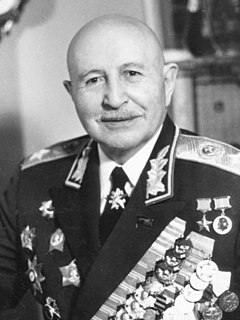 W
WIvan Khristoforovich Bagramyan, also known as Hovhannes Khachaturi Baghramyan, was a Soviet military commander and Marshal of the Soviet Union of Armenian origin. During World War II, Bagramyan was the second non-Slavic military officer, after Latvian Max Reyter, to become a commander of a Front. He was among several Armenians in the Soviet Army who held the highest proportion of high-ranking officers in the Soviet military during the war.
 W
WBasti Masim gizi Bagirova was an Azerbaijani cotton grower and politician. She is known as one of the first Stakhanovites in the Azerbaijan SSR.
 W
WAlexander Harutyuni Bekzadyan was a Soviet statesman of Armenian descent.
 W
WYusif Vazir Chamanzaminli, also spelled Chemenzeminli, born Yusif Mirbaba oghlu Vazirov was an Azerbaijani statesman and writer known for his novels, short stories, essays, and diaries. Evidence points to the fact that Chamanzaminli was the primary core author of the famous romance novel Ali and Nino first published in 1937 in Austria under the pen-name of Kurban Said.
 W
WPavel Alexandrovich Florensky was a Russian Orthodox theologian, priest, philosopher, mathematician, physicist, electrical engineer, inventor, polymath and neomartyr.
 W
WAbdurrahim bey Asad bey oglu Hagverdiyev was an Azerbaijani playwright, writer and cultural figure, stage director, politician, public figure, one of the 5 thirst Azeri Deputats of First Duma of Russia Empire, Deputat of Georgian Parliament, Creator Theatrical Writers Society in Azerbaijan, one of the redactors jornal “Molla Nasreddin”, Ambassador Azerbaijan in Dagestan and Armenia.
 W
WUzeyir bey Abdul Huseyn oglu Hajibeyov was an Azerbaijani composer, conductor, publicist, playwright, and social figure. He is recognized as the father of Azerbaijani composed classical music and opera. Uzeyir Hajibeyov composed the music of the national anthem of Azerbaijan Democratic Republic. He also composed the anthem used by Azerbaijan during the Soviet period. He was the first composer of an opera in the Islamic world.
 W
WKaro Semyonovich Halabyan was a Soviet Armenian architect. He was Honoured promoter of the Art of Armenian SSR (1940).
 W
WAshot Garegini Hovhannisyan (Ioannisyan) was a Soviet Armenian statesman, historian, academic of Science Academy of Armenia (1960). From 1922 to 1926 he was the First Secretary of the Communist Party of Armenia.
 W
WAdil Rza bey oglu Isgandarov was an Azerbaijani theatre and film director, actor, first People's Artist of the USSR from Transcaucasia.
 W
WSarkis Hovhannesi Kasyan or Kasian was a Soviet Armenian statesman, politician and journalist.
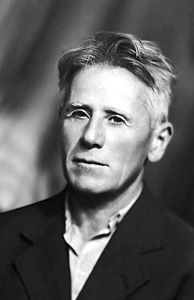 W
WGevork Vartanovich Kotiantz was a Soviet, Russian - Armenian painter, who lived and worked in Leningrad, regarded as one of representatives of the Leningrad school of painting.
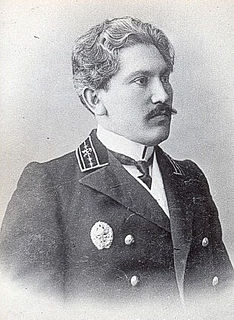 W
WKhudadat bey Aghabey oglu Malik-Aslanov was an Azerbaijani politician and university professor.
 W
WAnastas Ivanovich Mikoyan was an Armenian Communist revolutionary, Old Bolshevik and Soviet statesman during the mandates of Lenin, Stalin, Khrushchev and Brezhnev. He was the only Soviet politician who managed to remain at the highest levels of power within the Communist Party of the Soviet Union, as that power oscillated between the Central Committee and the Politburo, from the latter days of Lenin's rule, throughout the eras of Stalin and Khrushchev, until his peaceful retirement after the first months of Brezhnev's rule.
 W
WLevon Isayevich Mirzoyan was the Secretary of the Communist Party of the Azeri SSR from January 21, 1926 to August 5, 1929 and the First Secretary of the Communist Party of the Kazakh SSR from December 5, 1936 to May 3, 1938. He was executed during the Great Purge.
 W
WKhudadat bey Rafibeyli, also known as Khudadat Rafibeyov, was an Azerbaijani statesman who served as Governor General of Ganja Governorate and Minister of Healthcare of Azerbaijan Democratic Republic, and was also the member of Azerbaijani National Council and later Parliament of Azerbaijan. He was the father of Azerbaijani writer Nigar Rafibeyli, father-in-law of Rasul Rza and grandfather of Anar Rzayev, chairman of Writers' Union of Azerbaijan.
 W
WVartan Stepanovich Sarkisov (Sargsyan) was a Soviet architect of the first half of the twentieth century.
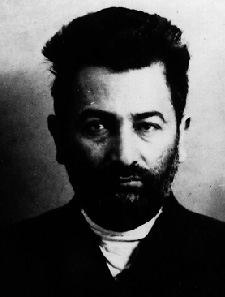 W
WSuren Konstantinovich Shadunts was First Secretary of the Communist Party of Tajikistan between 1934 and 1937. Shadunts was executed in 1940 as part of the Great Purge.
 W
WGrikor Mirzaian Suni was an Armenian composer.
 W
WSahak Mirzoyi Ter-Gabrielyan was a Soviet Armenian statesman. In 1928–1935 he was the Prime-Minister of Armenian SSR.
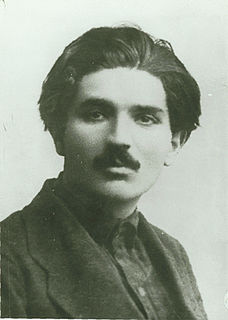 W
WVagarshak Arutyunovich Ter-Vaganyan was an Armenian communist party leader who was one of the first victims of Joseph Stalin's Great Purge. Ter-Vaganyan was one of sixteen Soviet intellectuals who stood as defendants during the Moscow Show Trials. He was accused of being part of the Trotskyite-Zinovievite centre which allegedly prepared terrorist acts against Stalin, Klim Voroshilov, Andrei Zhdanov, Lazar Kaganovich, Sergo Ordzhonikidze, Stanislav Kosior, and Pavel Postyshev. Under pressure, Ter-Vaganyan was forced to admit his "guilt." He was shot and his personal property was confiscated by the Soviet Union.
Mustafa bey Nadir Agha oglu Vakilov was an Azerbaijani public figure, politician and diplomat. He served as the Minister of Internal Affairs. Vakilov was the youngest Azerbaijani minister.
 W
WAmatuni Vartapetyan was First Secretary of the Communist Party of Armenia from 1936 to 1937. He appeared on Stalin's execution list of July 26, 1938.